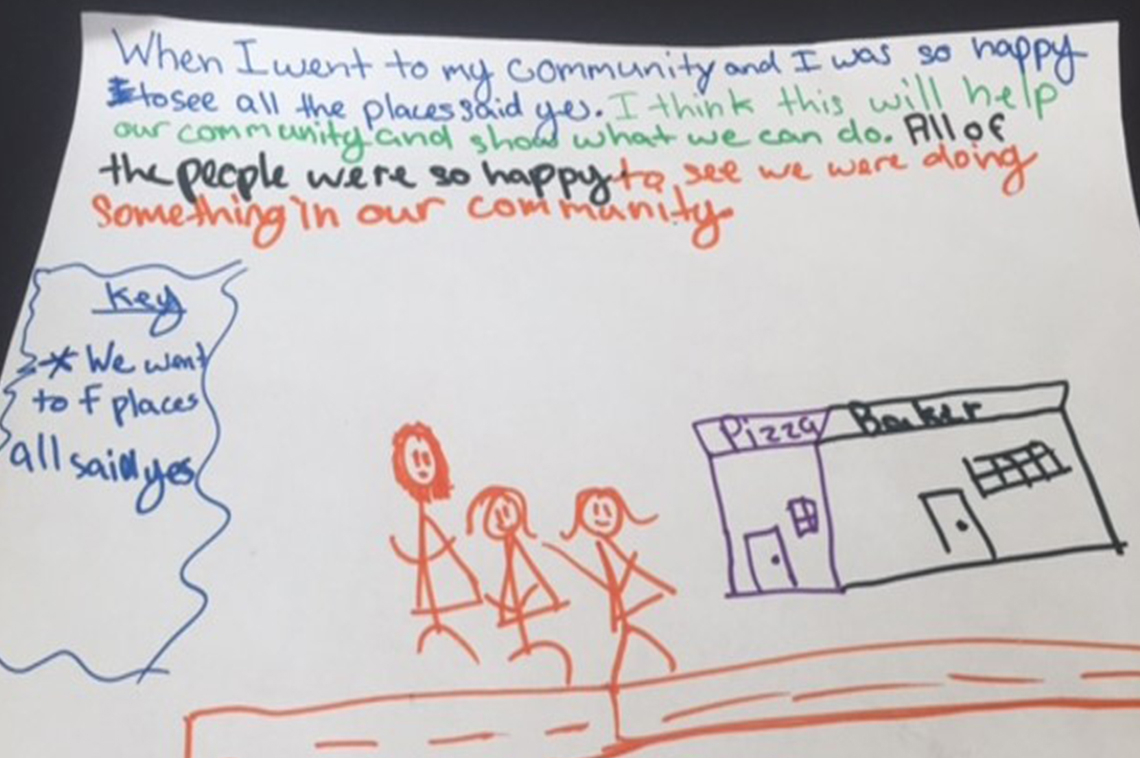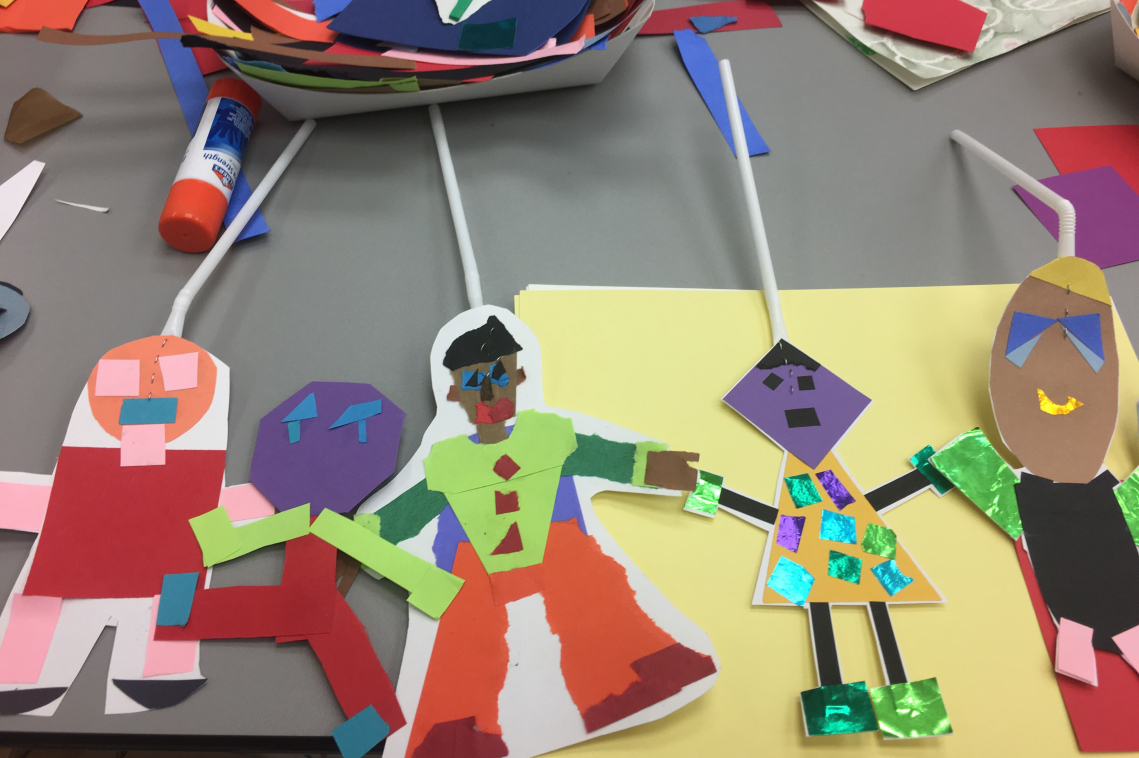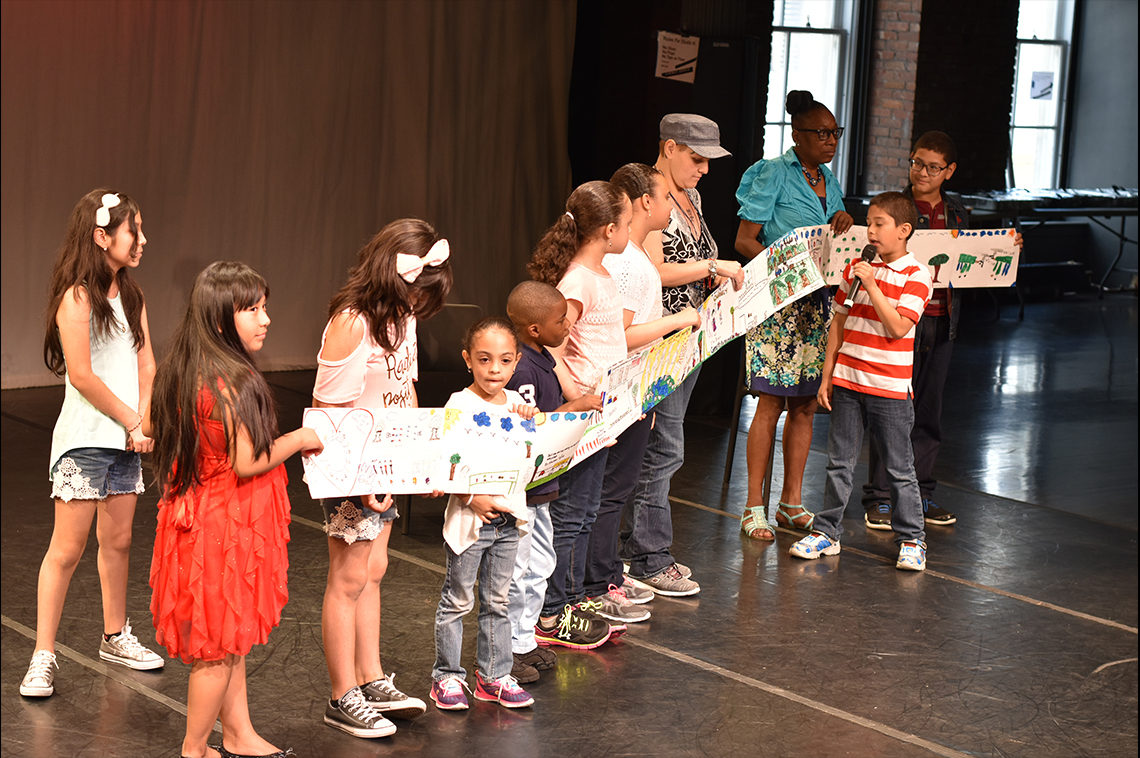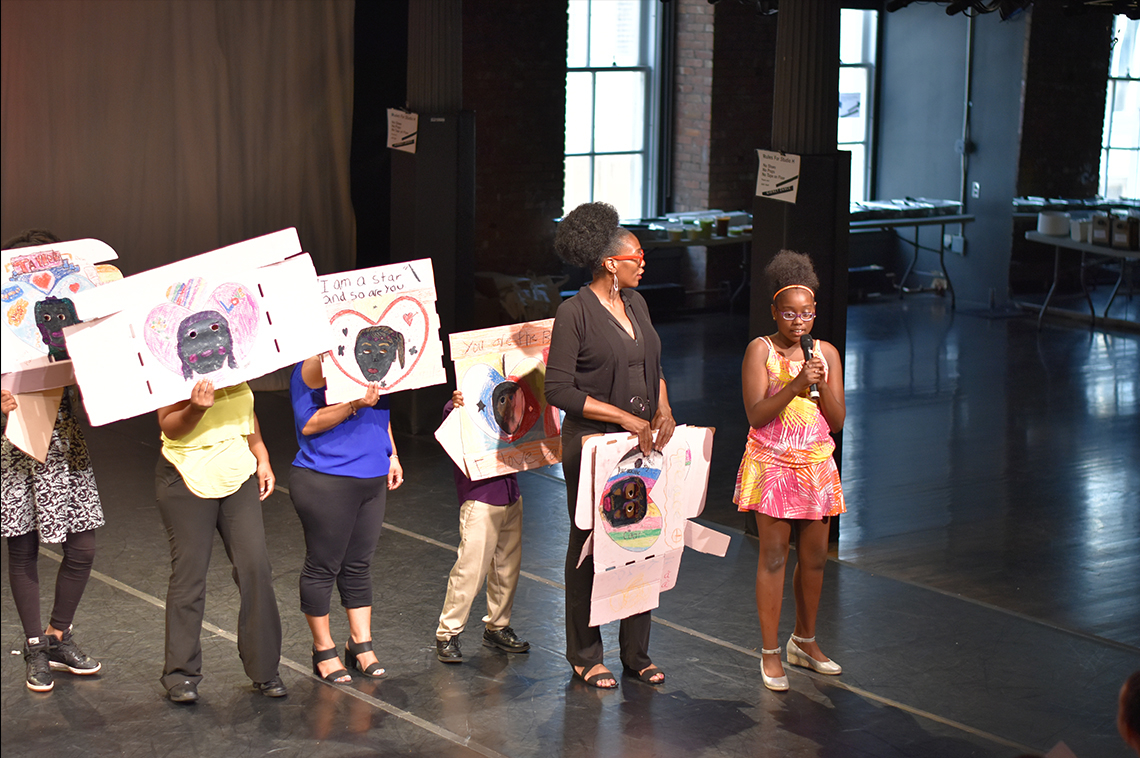



There are two essential truths driving Young Audiences New York’s approach to community development forward. When children and young people create art, they have the exceptional, extraordinary power to bring their families along with them, and when more children and families together- there is more community.
With increased focus on these important, fundamental—and often overlooked--building blocks, Young Audiences New York’s new model for art making “in school, with family and out into neighborhood” puts children and young people at the center of increasing the social interactions which are at the very core of neighborhood well-being.
Observing the Obvious: Children’s ArtMaking Brings Families Together
Our focus on the power of setting off a “school-family-community” spiral effect started with an observation of the obvious: when children and young people create art works alongside artists-- ranging from musical theatre productions to digital media ad campaigns and more--their families—parents, siblings, neighbors, grandparents—gather round in a BIG way.
While this is a common truth in communities across all income levels, there is an added importance to the gathering up that happens in the paved in school courtyards (doubling as parking lots) and “caf-a-toriums” in under- resourced neighborhoods. It is so powerful to experience the lines of parents waiting to come into the performance or presentation with grandparents, strollers full of littler siblings, even older siblings who have taken the morning or afternoon off from their own commitments to be present.
Right in front of us is the power of families together, families who often speak different languages, may not feel safe having their children walk home from school and who always respond to our surveys with a simple request: more, please! After a performance or presentation of what the children have been creating (dances, masks, puppets, clay sculptures, percussion rythms…) it is also incredible to observe the joyful energy of confident children trickling out of the school doors with their proud families, some stopping for an ice cream or pizza on the way home—these interactions too, can contribute to weaving a neighborhood web of connectivity.
Asking: What could all this positive people energy do for neighborhood well-being?
At Young Audiences New York, we gave ourselves the challenge of finding an answer to this question: how can we bring the energy of children’s artmaking from “in school and with family” out into the neighborhood to increase the social connections that spark enhanced neighborhood well-being?
We have been experimenting our way into answers, pairing members of our Artist Company with teams of children and families outside of school to see what they could make happen together, with the goal of intentionally weaving more relationship networks. Here are a few examples of the social connections we are witnessing—and why we believe they matter so much!
Children Are Valuable Connectors
In the Belmont neighborhood of the Bronx, surrounding Public School 205X, our elementary school children and their parents told us they wanted to have art not just in school, but in the neighborhood. They canvassed neighborhood businesses—a nail salon, pizzeria, bakery—and asked if they would display artworks produced by the children. In the words of one young girl: “They all said YES!” After creating community themed visual art works and installing them in the neighborhood businesses, the group proudly gathered for a neighborhood art walk. Most compelling about this? The development of Relationships that weave strangers together: Children receiving affirmation of their ideas from local business owners; mothers who did not know each other to even “say hello” beginning to do so—and thinking too about having children walk home together; a parent popping out of the local bodega to say hello to our artist in residence and ask about the next opportunity.
Children Really Do Know What Makes A Great Community—and They Can Take Us There Too!
This Spring, children, families and artists from creativity labs we organized in Cypress Hills, Brooklyn, Tremont and Belmont in the Bronx and Harlem gathered up to share how they were making their neighborhoods better through art:
The Cypress Hills group, anchored in Public School 89K had created their own video “travel guide” sharing all that is already great about their neighborhood: the library, the diversity of food and the people!
After reading their love letters to the Bronx, the Tremont group, anchored in Public School 236X offered an interpretive dance of a beautiful day together at the playground, concluding with an all-in “Love Train.” The Belmont team, anchored in Public School 205X used masks in their poignant rendition of “Getting To Know You” (from the King and I) to share what they love about each other.
The Harlem group, anchored in Public School 125M used ceramic tilemaking and interpretive dance to tell the story of the flow of motion in a neighborhood as people travel to work, school, the park and home—passing each other all along the way.
What’s Ahead?
Many people understand that it is nice for all children to have the chance to experience and create art. These examples lead us to conclude: children’s artmaking, it’s not just nice, it’s necessary. The value to children and young people is obvious (though chronically underfunded)—the value to the social well- being of whole neighborhoods overlooked!
At Young Audiences New York, we are refining and expanding our approach, and eagerly digging into “The Social Wellbeing of New York City’s Neighborhoods,” study by Mark J. Stern and Susan Seifert at the University of Pennslyvania, to apply the concept of neighborhood ecosystems to our next set of actions. We’d love to hear from others around the country who are also leveraging the power of children’s artmaking for thriving communities.
Thanks for reading!
Eileen Doyle





